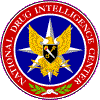
|
National
Drug Intelligence Center
Oregon High Intensity Drug Trafficking Area
Drug Market Analysis
June 2007
Strategic Drug
Threat Developments
- Mexican drug trafficking organizations (DTOs) have increased
the amount of methamphetamine that they are transporting to the
Oregon HIDTA region to fill a void caused by decreased local production.
Local methamphetamine production has decreased sharply following
enactment of state legislation controlling over-the-counter (OTC)
purchases of cold and allergy medicines containing pseudoephedrine
or ephedrine.
- Mexican DTOs have increased local outdoor cannabis cultivation,
particularly on public lands in the Oregon HIDTA region and throughout
the state.
- Indoor cannabis cultivation has increased significantly within
the Oregon HIDTA region. Law enforcement reporting indicates that
many individuals supposedly operating under the regulations of the
Oregon Medical Marijuana Program are producing greater quantities
of the drug than specified in the regulations.
- Asian DTOs are establishing increasing numbers of high-potency
cannabis grow operations within the Oregon HIDTA region to avoid
the potential risks and costs associated with transporting the drug
across the U.S.-Canada border.
- Aging crack cocaine distributors in Portland are switching from
crack distribution to the distribution of diverted pharmaceuticals.
These distributors market the drugs to their existing customer base
as well as to new customers.
|
Drug Trafficking
Organizations, Criminal Groups, and Gangs
Drug trafficking organizations are complex
organizations with highly defined command-and-control
structures that produce, transport, and/or distribute
large quantities of one or more illicit drugs.
Criminal groups operating in the United States
are numerous and range from small to moderately sized,
loosely knit groups that distribute one or more drugs
at the retail and midlevels.
Gangs are defined by the National Alliance
of Gang Investigators’ Associations as groups or associations
of three or more persons with a common identifying sign,
symbol, or name, the members of which individually or
collectively engage in criminal activity that creates
an atmosphere of fear and intimidation.
|
To Top
To Contents
The Oregon HIDTA region encompasses eight counties in Oregon--Clackamas,
Deschutes, Douglas, Jackson, Marion, Multnomah, Umatilla, and Washington.
Sixty-five percent (2.4 million) of the state's population (3.7 million)
live in these eight counties. Major transportation routes that facilitate
the distribution of licit and illicit goods from domestic and foreign
source areas transit each of these eight counties. Interstate 5 offers
a direct north-south route from Mexico to Canada and traverses six of
the eight HIDTA counties (Clackamas, Douglas, Jackson, Marion, Multnomah,
and Washington). Interstate 84 crosses the state in an east-west direction,
connecting the HIDTA counties of Multnomah and Umatilla to drug markets
in other states, particularly Idaho. U.S. Highway 97, a north-south
route from the U.S.-Canada border to northern California, crosses the
state in Deschutes County and is a favored alternative route for drug
traffickers attempting to avoid law enforcement scrutiny on I-5. In
addition to these roadways, drug traffickers consistently use the state's
airways, railways, seaports, and waterways to transport and distribute
drugs to, through, and near drug markets in the HIDTA region.
To Top
To Contents
To Next Page
To Publications Page
To Home Page
|
